Horizontal Directional Drilling
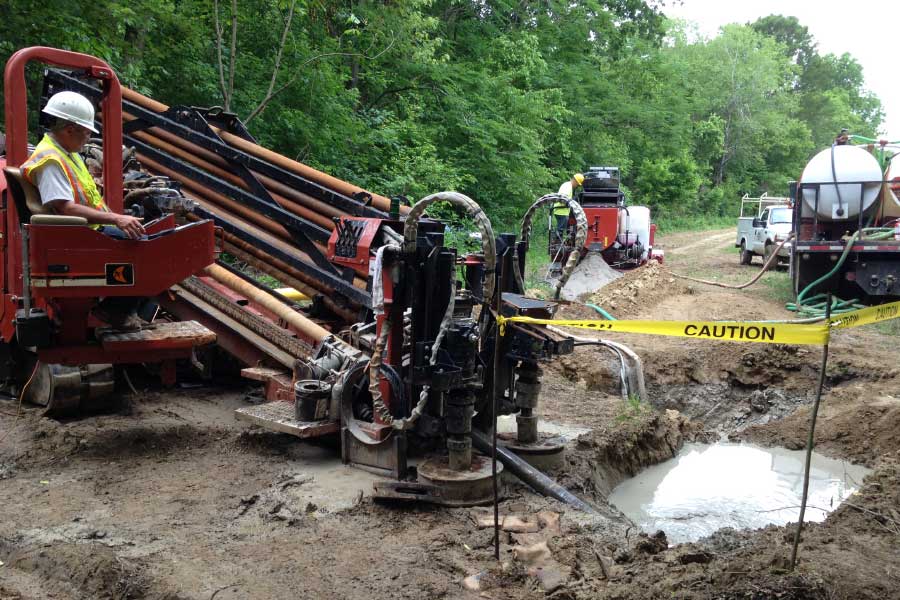
HDD Drilling
Overview
Horizontal Directional Drilling (HDD) is a “trenchless” method of installing underground pipes, conduit and cables in a shallow arc along a prescribed bore path by using a surface launched drilling rig. This method of installation causes minimal impact to the surrounding area. Directional Boring is used when trenching or excavating is not practical.
Directional Boring is used for installing water lines, sewer lines, gas lines, oil lines, product pipelines, telecommunications and power cable conduits. It is used for crossing roadways, waterways, congested areas and areas where other methods are not possible or are too costly. It provides for less traffic disruption, lower costs, deeper and longer installation, shorter completion times and it is more environmentally friendly.
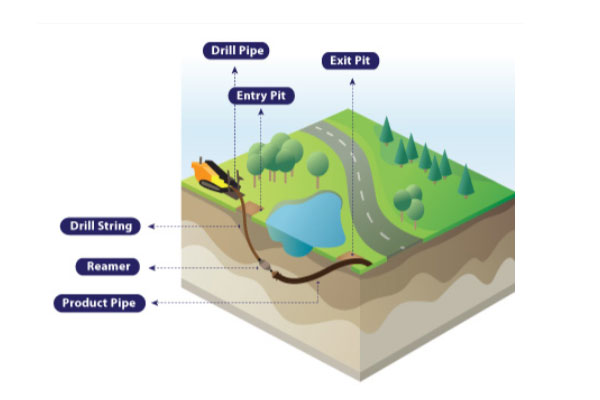
Step 1: Drilling a Pilot Hole
The first stage consists of drilling a small diameter pilot hole. Drilling fluid is pumped through the drill pipe to the drill bit where high pressure jets and the bit will grind the soils ahead of the drill stem. The drilling fluid will also carry the cuttings back to the entrance pit at the drill rig. Tracking of the pilot hole shall be by means of a walkover guidance system. An electronic transmitter behind the drill head will send a signal to the locator at the surface directly above the drill bit to give the exact coordinates of the drill stem. A reading will be taken every 5 to 15 feet to check the depth, alignment, and percent slope of the drill head. Corrections will be made by the operator and locator to keep the pilot hole along the predetermined bore path. The speed of the pilot hole will vary upon existing soil conditions and the amount of steering which is required. Upon reaching the exit point, the beacon housing and bit is detached and replaced with a reamer.
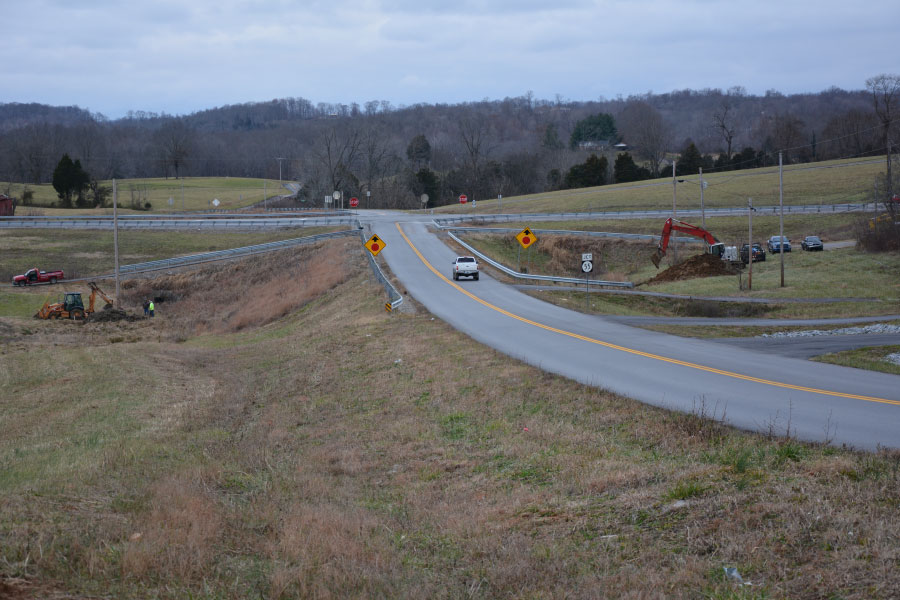
Step 2: Pre-Reaming the Pilot Hole
The second step is to pre-ream the pilot hole and enlarge it to a size sufficient to safely install the product lines. A reamer is pulled back and rotated while pumping drilling fluid to cut and remove solids to enlarge the hole. Pre-reaming speeds will vary depending on existing soil conditions and the amount of cuttings that are removed from the hole. Bentonite and additives will be used to ensure a clean and stable hole. Bentonite is used to create a “cake layer” around the outside of the hole during pre-reaming. This will help with the stability of the bore hole and with fluid loss or infiltration. Additives such as detergent and polymers are used to help break up the clay soils. A more evenly mixed drilling fluid will prevent any blockages inside of the bore hole.
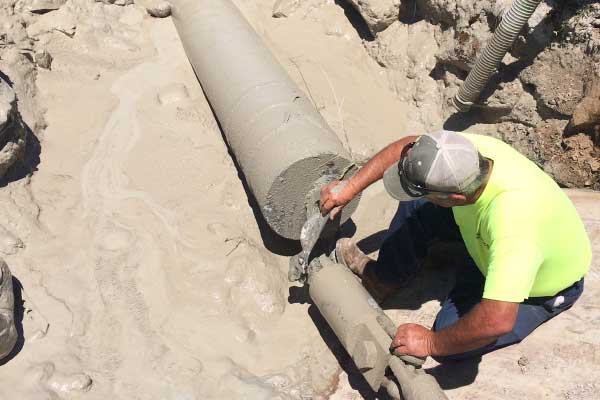
Step 3: Pipe Pullback
The final step is the pullback of the pipe within the pre-reamed hole. The drill rod and reamer will be attached to a swivel, which is utilized between the product line and the reamer to prevent any torsional stress from the rotating drill string being transferred to the product pipe. As the product pipe is pulled into the drill hole, drilling fluid is pumped downhole to provide lubrication to the product pipe.
Benefits
Durability
Quick Installation
Cost Effective
Less Disruption to Landscaping
Less Soil Contamination
Safety
Used in Many Situations with Flexible Locations

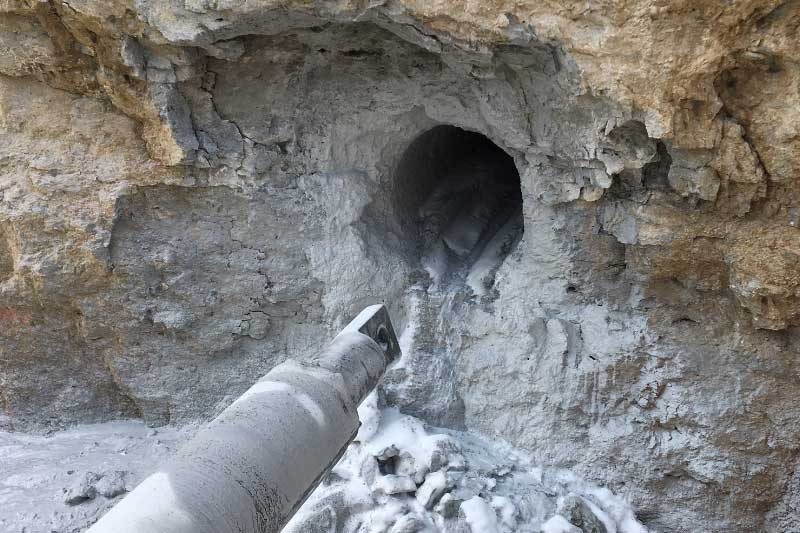
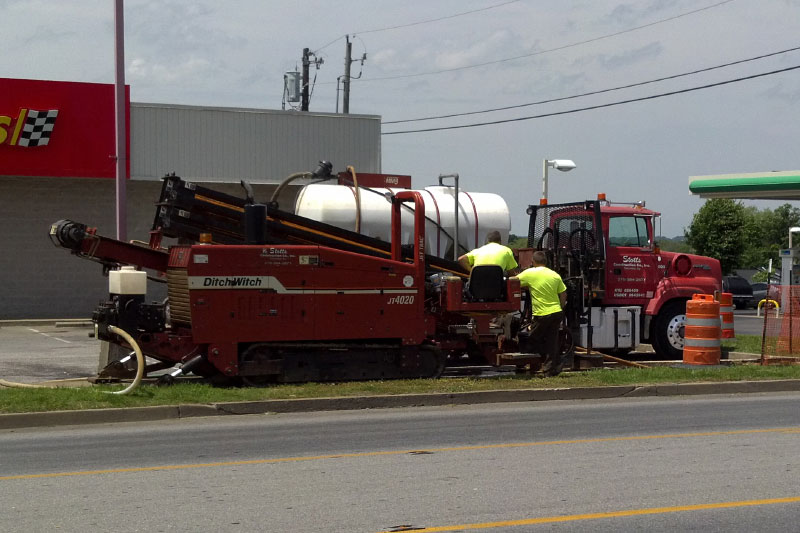
Start the conversation about our Horizontal Directional Drilling services.
